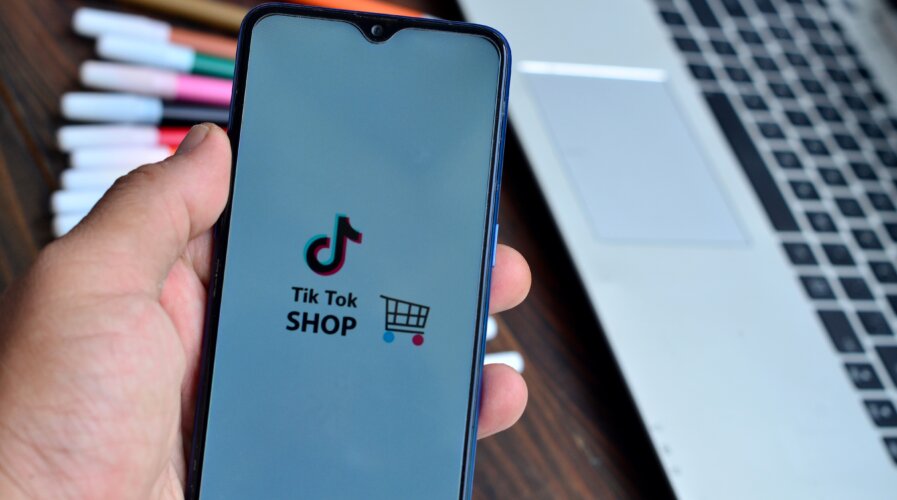
Watch out, Lazada and Shopee; TikTok Shop is no longer just a sleeping giantSource: Shutterstock
Watch out Lazada and Shopee; TikTok Shop is no longer just a sleeping giant
- In 2022 alone, TikTok Shop expanded to six Southeast Asian countries — Singapore, Malaysia, Indonesia, the Philippines, Vietnam, and Thailand.
- TikTok Shop’s GMV, or the total value of goods sold, skyrocketed more than four times to US$4.4 billion in Southeast Asia in 2022.
Two years since its launch, the popularity of TikTok’s e-commerce business, TikTok Shop, has rapidly risen due to the short video app’s global meteoric growth. The speedy ascent of the ByteDance-owned shopping feature has even raised the question of whether Shopee and Lazada can stay ahead of the competition in Southeast Asia’s crowded e-commerce market.
While TikTok is primarily known as a social media platform for short videos, the platform started dipping its toes into e-commerce in late 2021. By 2022, the e-commerce arm of the short-video platform started refocusing its efforts on Southeast Asia. Last year, TikTok Shop expanded to six Southeast Asian countries — Singapore, Malaysia, Indonesia, the Philippines, Vietnam, and Thailand.
According to internal data from tech media outlet The Information, TikTok Shop’s GMV, or total value of goods sold, skyrocketed more than four times to US$4.4 billion in Southeast Asia in 2022. This year, TikTok Shop reportedly aims for a GMV target of US$12 billion. In a recent report on Sea Group, the owner of Shopee, Shawn Yang, an analyst at Blue Lotus Research Institute, highlighted how TikTok continues to proliferate in Southeast Asian countries.
“We estimate that TikTok’s 2023 [GMV] will reach 20%~ of Shopee, which we suggest prompted Shopee to increase sales and marketing from April defensively,” Yang said. TikTok Shop’s current GMV is only a fraction of Shopee and Lazada’s. Shopee netted US$73.5 billion in GMV for 2022, while Lazada’s GMV was US$21 billion through September 2021, according to available public figures.
According to TikTok’s year-end report, the GMV of its international cross-border business grew 136% last year, with the social media giant setting a new GMV goal of US$23 billion for 2023. “More than 30,000 influencers and 60,000 stores have broadcast over 2.7 million hours of commercial content promoting their wares, garnering 1.3 billion user interactions,” the report stated.
Ironically, the rapid ascension into Southeast Asia comes when rival Asian e-commerce platforms ramped up their overseas expansion. Both Alibaba-owned Lazada and Shopee have been exploring Europe. Still, Shopee, which has been expanding its footprint in Malaysia, continues to build up its Brazilian operations after exiting several European and Latin American markets.
Meanwhile, TikTok has recently stepped up its activity across the region – including new platform features, incentives for merchants, and partnerships with e-commerce enablers and logistics partners.
Why is Southeast Asia a gold mine for TikTok Shop?
While Southeast Asia’s e-commerce market has accelerated since the mid-2010s, the pandemic has propelled it into a new phase. From 2016 to 2021, according to McKinsey, the total value of e-commerce sales grew fivefold, or 40%, annually. And e-commerce’s share of all retail sales surged to 20% from 5%.
Interestingly, the new stage of Southeast Asia’s e-commerce market isn’t just a matter of increased value. Across the subcontinent, more people are buying a more comprehensive array of products online across more diversified channels. Take social commerce, for instance, an e-commerce approach that allows businesses to sell products directly to consumers within the app.
In a global context, social commerce is on the path to becoming a US$1.2 trillion industry by 2025, with the most significant gains being made in Brazil and India. In Southeast Asia, on the other hand, the popularity of social commerce has been accelerated by high rates of mobile internet penetration. This mobile-first generation spends much time on social media and increases engagement.
With over 250 million users in the Southeast Asian region, TikTok is in a rather undisputable position to lead the social commerce market. Southeast Asian shoppers’ sentiment is also experiencing a wind of change, according to a survey conducted by online retail insights company Cube Asia.
The survey revealed that consumers spending on TikTok Shop are reducing their spending on Shopee (-51%), Lazada (-45%), and Offline (-38%) in Indonesia, Thailand, and the Philippines. Demographic data gathered online indicates the top ten countries with the most active TikTok users globally all reside within Southeast Asia, including Indonesia, Vietnam, the Philippines, and Thailand.
Indonesia has the second largest population of TikTok users after the US, according to Statista. Also, what sets TikTok Shop apart from its competitor is that it charges the lowest commissions as it tries to dominate the competition at 1%, compared to the 10% fees on other platforms.
Undoubtedly, the Bytedance-owned social media platform is up against stiff competition from established players like Shopee and Lazada. The upside, however, is that as the Southeast Asia e-commerce boom continues, social commerce will become increasingly ubiquitous, and TikTok is perfectly poised to explore this as a revenue stream. So we will have to wait and watch the space to see how it plays out for all three leading players – TikTok, Lazada, and Shopee.
READ MORE
- Safer Automation: How Sophic and Firmus Succeeded in Malaysia with MDEC’s Support
- Privilege granted, not gained: Intelligent authorization for enhanced infrastructure productivity
- Low-Code produces the Proof-of-Possibilities
- New Wearables Enable Staff to Work Faster and Safer
- Experts weigh in on Oracle’s departure from adland


